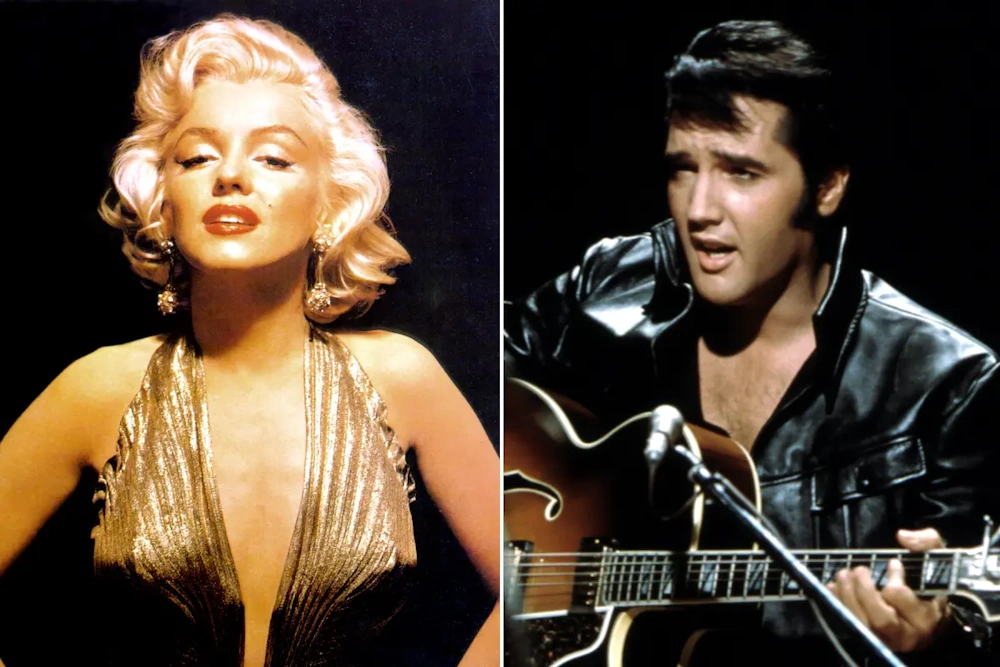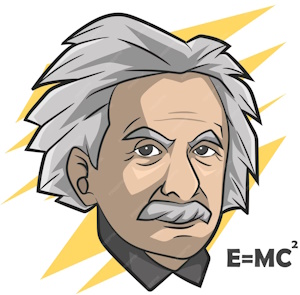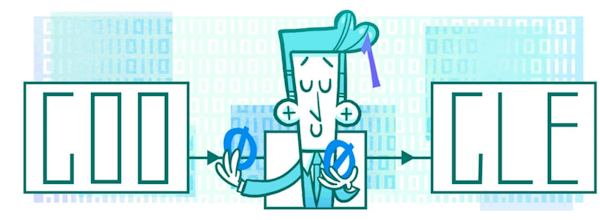 AI in America
AI in America
Sample from the forthcoming book by AI World
 The Dartmouth Conference
The Dartmouth Conference
1956 was a banner year in America. Dwight David Eisenhower, General of the Army, a five-star, and hero of the Second World War, was re-elected President of the United States of America in a landslide. The Yankee's Mickey Mantle also had a great year, winning the Triple Crown with a .353 batting average, hitting 52 home runs, and driving in 130. Marilyn Monroe launched her acting career, starring in several movies and creating Marilyn Monroe Productions to have more control over her projects. Elvis Presley had a breakout year too, appearing on the Ed Sullivan TV show and producing number one hit songs with "Heartbreak Hotel", his first national #1 hit, "Hound Dog", "Don't Be Cruel", and "Love Me Tender". Teflon pans were invented in 1956, Dear Abbey answered her first letter, and the motto "In God we Trust" was authorized.

🇺🇸
1956 was a very big year indeed in America, but there was one significant event that went larely unnoticed. In a small town in New Hampshire several academics met to discuss a topic few in America knew anything about. The scholars met in the mathematics hall of Dartmouth College to study something called "artificial intelligence":
"We propose that a 2-month, 10-man study of artificial intelligence be carried out...The study is to proceed on the basis of the conjecture that every aspect of learning or any other feature of intelligence can in principle be so precisely described that a machine can be made to simulate it."
The organizer of the event was John McCarthy, Assistant Professor of Mathematics at Dartmouth. Born in Boston to immigrant parents, McCarthy was educated at Caltech, the renowned California Institute of Technology, where his interest in computing was piqued when he attended a lecture from John von Neumann, the man acknowledged as the "father of modern computing" for his creation of the von Neumann architecture, the basis of modern digital computer design.
After graduating from Caltech in 1948, McCarthy went cross-country to Princeton, New Jersey, for his PhD, being closer to his New England roots and to the center of intellectual thought in America. Princeton University's influence in the early 1950s was immense, shaping the trajectory of mathematics, physics, and computer science, with thinkers like Albert Einstein, John von Neumann (whom he met at Caltech), Alonzo Church, Kurt Godel, and Robert Oppenheimer (scientific director of the Manhattan Project). Princeton was one of the leading centers for mathematics and theoretical research, home to some of the greatest minds in mathematics, a perfect setting for McCarthy's interests in math and computing. McCarthy was particularly drawn to Princeton because of its strength in mathematical logic, a field that would later become central to his work in AI.

McCarthy earned his Ph.D. in mathematics from Princeton University in 1951, where he studied under Solomon Lefschetz and worked on topics related to mathematical logic and computation. Upon graduation, McCarthy landed a job at IBM's Thomas J. Watson Research Center in Poughkeepsie, New York. This location was one of IBM's primary research and development hubs during that time. Home to Vassar College, Poughkeepsie is located in the Hudson Valley region of New York, approximately 75 miles north of New York City, not far from Princeton.
McCarthy joined IBM at a time when the company was at the forefront of computing innovation. IBM was developing some of the earliest commercial computers, such as the IBM 701. McCarthy collaborated closely with Nathaniel Rochester, a man who was instrumental in bringing McCarthy to IBM. Rochester shared McCarthy's interest in machine intelligence and supported his early explorations into AI. Together, they worked on developing programs that could simulate human reasoning and problem-solving, laying the groundwork for AI research. At IBM, McCarthy began experimenting with programs that could perform tasks requiring intelligence, such as playing chess and solving mathematical problems. One of his notable projects was developing a program to play chess, which was one of the earliest attempts to create a machine capable of strategic thinking. Although the program was rudimentary by today's standards, it was a significant step toward understanding how machines could simulate human thought processes.
McCarthy's work at IBM reinforced his interest in formal logic as a foundation for AI. He began exploring how logical reasoning could be implemented in machines, an idea that would later become central to his development of LISP and other AI systems. While at IBM, McCarthy began thinking about ways to make computing more efficient and accessible. This led to his early ideas about time-sharing, a system that would allow multiple users to interact with a computer simultaneously. Although time-sharing was not fully realized during his time at IBM, McCarthy continued to develop the concept later in his career, and it became a cornerstone of modern computing.
John McCarthy left IBM in 1953 to pursue academic opportunities that aligned more closely with his interests in AI and theoretical computer science. McCarthy was deeply interested in exploring theoretical questions about computation and intelligence, which were not the primary focus of IBM's industrial research at the time. Academia offered him the freedom to pursue these ideas without the constraints of corporate priorities. At IBM, McCarthy worked on practical computing problems, but his passion lay in the theoretical foundations of AI and formal logic. Moving to an academic setting allowed him to focus on these areas and collaborate with like-minded researchers.
McCarthy was offered a position at Dartmouth College as Assistant Professor of Mathematics, an opportunity to teach and conduct research in a more flexible and intellectually stimulating environment. Dartmouth was interested in fostering interdisciplinary research, which aligned with McCarthy's vision for AI. Soon after his appointment, McCarthy launched an effort to bring visionaries together that shared his passion. He chose to organize a conference as a way of achieving his goals for AI because it could provide a platform for collaboration, legitimize the field, generate needed momentum, and help to secure funding.
But a key question remained as to how to organize the conference, how to bring people together, and most importantly, how to get funding. McCarthy decided to reach out to his contact list, an impressive network of all-stars in industry and academia for a man so early in his career. First, there was Marvin Minsky, fellow graduate student at Princeton, who became a professor at Harvard after receiving his PhD at Princeton. Second, there was former colleague Nathaniel Rochester, the man who helped bring McCarthy to IBM. Finally, McCarthy reached out to Claude Shannon, a legendary figure in the scientific community. McCarthy met Shannon in 1952 when McCarthy interned at Bell Labs where Shannon was a researcher. Shannon's work on information theory had laid the groundwork for the digital revolution when he published his seminal 1948 paper "A Mathematical Theory of Communication". McCarthy and the others were stars; Shannon was the MVP, the key piece of the puzzle to get publicity and funding.

Google Doodle of Claude Shannon
Together--McCarthy, Minsky, Rochester, and Shannon--collaborated on the proposed conference of intellectuals. McCarthy wrote the draft of the proposal and circulated it to Minsky, Rochester, and Shannon. The final draft was submitted to the Rockefeller Foundation for funding. The Rockefeller Foundation was well known for funding innovative and interdisciplinary research projects. The foundation had a history of supporting scientific endeavors that pushed the boundaries of traditional disciplines. The proposal for the conference aligned with the foundation's mission to advance knowledge. McCarthy knew that securing funding from a prestigious organization like the Rockefeller Foundation would lend credibility to the conference and help attract top researchers. The involvement of prominent figures like Claude Shannon and Nathaniel Rochester enhanced the proposal's credibility.
"A Proposal for the Dartmouth Summer Research Project on Artificial Intelligence" was submitted to the Rockefeller Foundation in August 1955, and funding in the amount of $7,500 (about $80k today), half of what they requested, was granted in late 1955. The goals of the project were to explore the potential of machines to simulate human intelligence and establish artificial intelligence as a legitimate field of study. Due to harsh New England winters, the organizers planned to hold the conference in the summer of 1956. This timeframe also allowed college professors to attend while on summer break, away from their teaching and researching duties.
![]() We'd love your thoughts on the book ❤️
We'd love your thoughts on the book ❤️
 Links
Links
AI in America home page
Biographies of AI pioneers